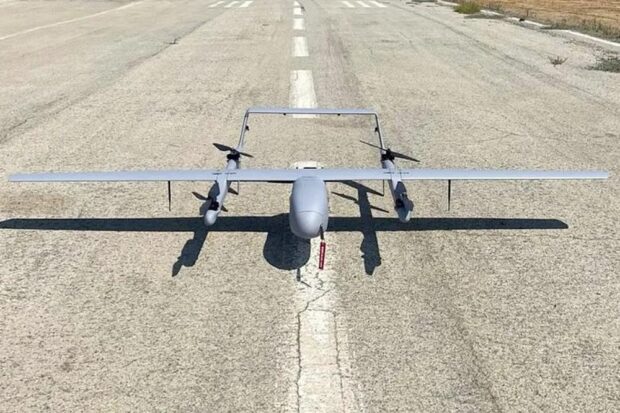Ukraine is to expand its use of Poseidon vertical take-off and landing (VTOL) uncrewed air vehicles (UAVs), following a new approval by the nation’s defence ministry.
On 22 January, Kyiv announced that it had “codified and adopted the domestically-produced Poseidon UAV system for deployment within the units of the defence forces”.
The Poseidon H10 MkIII was initially contracted for testing in May 2022. During its trials, the drone demonstrated several advanced features that set it apart from many previously deployed systems. These included resistance to electronic warfare, the ability to autonomously evade threats and return to base, stable flight performance even in adverse weather, and reliable operation over extended distances. This system is designed to execute a wide range of missions, from advanced reconnaissance to providing tactical support for infantry, artillery, and intelligence units.
The Poseidon H10 MkIII integrates sophisticated technology to maximize its operational effectiveness. It features a day camera with a 20x synthetic zoom and stabilization for precise imaging, as well as a thermal imaging camera with a 4x zoom for enhanced performance in low-visibility conditions. These features enable detailed monitoring and data collection regardless of the time of day or weather. The UAV operates at altitudes of up to 5,000 meters and can reach a maximum speed of 150 km/h, with an operational range of 150 km. The system is designed for versatility, functioning reliably in extreme temperatures ranging from -40°C to +60°C.
Each Poseidon H10 MkIII system consists of three drones and two control stations, ensuring uninterrupted operations even in the event of a drone loss. To facilitate rapid deployment, the system includes transport cases that securely store all components, making it suitable for various field conditions. Operators undergo rigorous training at the 190th Training Center, where they master the use of the drone before deployment. This comprehensive preparation ensures that operators can maximize the system’s potential in real-world operations.
The drone is particularly effective during counteroffensive operations, where timely intelligence and precise targeting are critical. By offering extended surveillance and real-time data transmission, the Poseidon H10 MkIII allows ground forces to anticipate and neutralize threats with greater efficiency. Its advanced counter-electronic warfare systems further enhance its resilience in contested airspace, making it a reliable tool for modern military engagements.
The introduction of the Poseidon H10 MkIII underscores Ukraine’s commitment to developing locally sourced defense technology, reducing reliance on foreign suppliers while bolstering its defense industrial base. This approach aligns with the broader objective of achieving technological independence and ensuring sustainable support for the military’s evolving needs. Furthermore, the use of domestically produced systems like the Poseidon contributes to operational self-reliance, a crucial factor in sustaining long-term conflict readiness.
“The operational altitude of these drones exceeds the reach of many enemy air defence systems,” notes deputy defence minister Dmytro Klimenkov, with the air vehicle also equipped with unspecified “advanced navigation technology”.
Meanwhile, Kyiv has approved funding of UAH2.5 billion ($60 million) which will be provided directly to its combat units each month.
“These funds will be distributed among brigades of the armed forces to procure drones,” the defence ministry says.
An initial allocation of UAH2.1 billion was made last December, “enabling the rapid fulfilment of our brigades’ needs and enhancing the diversification of centralised command”, it states.“We have analysed this experience and decided to scale up the initiative,” says defence minister Rustem Umerov. “Commanders of the units will have the flexibility to use these funds to acquire the drones that are the most effective for carrying out mission requirements.”
Kyiv is already set to receive some 30,000 new surveillance and attack drones via a multinational initiative between NATO members Denmark, Latvia, the Netherlands, Sweden and the UK. Other alliance nations, including Canada, Norway and Portugal, also are providing funds to enable Ukraine’s defence industry to boost domestic output of UAVs.
Sources: Army Recognition; FlightGlobal



